Myth: PT is going to hurt
“No pain, no gain” is not true! Patients delay coming into PT due to misconception that they are going to worsen their condition. We are here to help, and research shows that coming in sooner rather than later will help reduce your current symptom frequency/intensity and begin to get you on the road to recovery. We are trained to manage myriad conditions conservatively and effectively mitigate symptoms from acute to chronic conditions. Early physical therapy treatment leads to better clinical outcomes and reduced overall cost. Your PT will communicate with you along the way, and let you know how things are expected to progress and what to expect during and following treatment.
Myth: You need to see your primary doctor or a specialist before seeing a PT
Depending on your insurance plan, you may not need a referral to see a PT. All 50 states, as well as the District of Columbia and the US Virgin Islands have direct access available, meaning that you are permitted to go directly to a PT without a doctor’s referral. Your insurance may however require a referral, which is something that we will verify when making your first appointment. PTs are the experts in musculoskeletal injury and prevention! Just like you would go straight to the dentist or a chiropractor for certain ailments, PTs have Doctor of Physical Therapy degrees which make us adept in identifying dysfunction and implementing interventions as indicated. We receive 7 years of schooling, in addition to extensive clinical hands-on training, and rest assured that we are trained to rule out if something is not within our neuromuscular/musculoskeletal wheelhouse, to refer you to the appropriate clinician. Save yourself the runaround, additional time and money, by coming directly to a Doctor of Physical Therapy.
Myth: All PT is the same
Sometimes people relate the experience that a friend who went to PT had, or their own prior experience from another clinician or from 10-15 years ago. Doctors of Physical Therapy graduate and sit for a national board exam to receive their license to treat patients, receiving similar fundamental background knowledge, however after such time, clinicians’ paths often diverge depending on their work environment, clinical interests, personal experience and expertise. Education does not end following PT school! We continue to take specialized courses, which can lead to differing clinical philosophies and treatment techniques. Every PT brings their own personal background and treatment approach with different strengths and sets of “tools in our toolbox.”
Myth: Physical Therapists “cure” or “fix” people
Approaching PT with the attitude that your therapist is going to provide only passive techniques, or completely cure your ailment, without putting in any effort on your own, then your outcomes may not be as transformative as you expect. It is much better to ask the question, “what can I do to help myself?” rather than “what can you do for me?” This can actually be empowering, as it gives you the tools to be able to help yourself and prevent future injuries, as well as help you progress much more effectively throughout your current rehabilitation. As much as we enjoy working with our patients, you will not be attending PT forever, so we want to give you tools for successful outcomes and self-care, and the ability to return to your regular routine! Think about it this way – you are only here for 1 hour out of 24 in the day, so there is going to involve a home exercise program and some lifestyle modifications, that will allow you to progress quicker and be much more effective in getting you better, faster! We can only help you as much as the effort you dedicate, and we are here to guide and encourage you along the way. Our goal is to improve function, and depending on what you are coming in for, we want to keep the issue from recurring, not simply treat your current injury/pain episode; this involves adherence to the program we set up for you and following your therapist’s advise and recommendations for home as well. You will get out what you put in 😊 Let’s work as a team!
Myth: Physical Therapy is “just exercises”
A good PT is going look at you as a whole person; we do a lot of investigating to solve the “puzzle” and every piece of information you give us, spoken or unspoken, is a part of the larger picture. Yes, we are looking at objective measures, such as your range of motion, and feeling how different structures: joint, muscle and soft tissue move or don’t move. But, we are also assessing your posture, gait, compensatory strategies, and habits such as sleep and nutrition, among other things. The research shows the best outcomes from a combination of therapeutic exercise, manual treatment and patient education. Your therapist will know your limits, and wants to set you up for success. We want to focus on what you can do, not what you can’t do, working toward reasonable goals. Every person is different, and even with similar injuries, the situation that led to the injury and the person’s lifestyle may be drastically different. For this reason, treatment is always customized and tailored to your personal abilities and needs. We are constantly re-evaluating and re-assessing your current condition, and adjusting your plan of care accordingly. Your therapist’s goal is to get you back to doing what you enjoy, as safely as possible. The longer you hold off on treatment, are not an active participant, or do not follow the advise of your PT, your recovery may take longer than necessary. We will create an environment to facilitate healing, which sometimes does take time due to the physiology of the body, but we will focus on what you can do along the way to have the best possible outcome.
In conclusion
You are in control of your recovery, and your PT will give you the tools and treatment needed to get you feeling the best you can! Don’t be afraid – PT might be a learning process, but the more you know about your condition, the better off you will be – we are here to help, and the most rewarding part of our job is seeing positive outcomes and our patients’ success stories!

